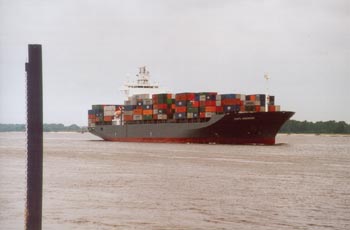https://cerncourier.com/a/sesame-opens-the-door-to-middle-east-co-opera…

The SESAME (Synchrotron Radiation Light for Experimental Science and Applications in the Middle East) project to build a synchrotron light source in the Middle East took a step closer to reality in June, when it received unanimous approval from the UNESCO executive board. The board endorsed SESAME as "a model that should be made known to other regions", and described it as a quintessential UNESCO project.
The idea for SESAME dates back to 1997 when, at a seminar on Middle East Scientific Co-operation (initiated by CERN's Sergio Fubini), Herman Winick of SLAC and Gustav-Adolf Voss from DESY suggested using components of Berlin's BESSY 1 machine, scheduled to be closed down in 1999, as the core facility for a new laboratory in the Middle East (CERN Courier March 2000). Soon after, an interim council was established along identical lines to CERN under the auspices of UNESCO. Like CERN before it, SESAME is a project designed not only to advance science and technology, but equally importantly to help bring peace and stability to a troubled region through scientific collaboration. Former CERN director-general, Herwig Schopper, chairs its interim council.
In 2000, Jordan was chosen to host the new facility (CERN Courier June 2000); 13 interim council member states undertook to provide $50,000 (?50,000) per year each for three years from 1 January 2001 for preparatory work, and the US State Department and Department of Energy contributed $200,000.
The endorsement of the SESAME project by UNESCO's executive board is an important step towards establishing SESAME as an independent international scientific organization. As soon as six potential member states have deposited their agreement of the new laboratory's statutes with UNESCO, SESAME will gain its independence and the interim council will give way to a governing council, again based on the CERN model.
So far Bahrain, Iran, Jordan, the Palestinian Authority and Turkey have formally decided to join SESAME. Other member states of the interim council are Egypt, Greece, Israel, Morocco, Oman, Pakistan and the United Arab Emirates. Armenia and Cyprus, originally members of the interim council, have changed their status to observer. For Armenia, the change of status came when the country took the decision to build its own light source (CERN Courier October). Other observers are France, Germany, Italy, Japan, Kuwait, the Russian Federation, Sudan, Sweden, the UK and the US. Kuwait has indicated that it intends to become a full member of SESAME.
Originally conceived as a 1 GeV machine, the interim council has already approved plans presented by technical director Dieter Einfeld to upgrade SESAME from the 0.8 GeV BESSY 1 machine to 2 GeV, resulting in a third-generation light source with 13 positions for insertion devices. Advisory committees have been appointed, and tangible progress was made in June, when the BESSY 1 machine set sail from Germany bound for the Jordanian port of Al-Aqabe. A request has been made to the European Union (EU) for ?8 million for the installation and upgrade of the machine. An evaluation panel has submitted a report to the EU, but its contents have not yet been made public.
A seminar organized and financed by the Japanese Society for the Promotion of Science to discuss the scientific programme, including the first beamlines, was held in the Jordanian capital Amman in October. Several laboratories have offered beamline equipment, and financial support for beamlines is being sought from the International Atomic Energy Authority in Vienna and from US agencies. Meanwhile, the Jordanian government has agreed to finance the building that will house the centre at a campus of the Al-Balqa' Applied University in Allan, 30 km from Amman. A ground-breaking ceremony in the presence of the Jordanian king, HM Abdullah II, and the director-general of UNESCO, Koïchiro Matsuura, is planned for 6 January 200

